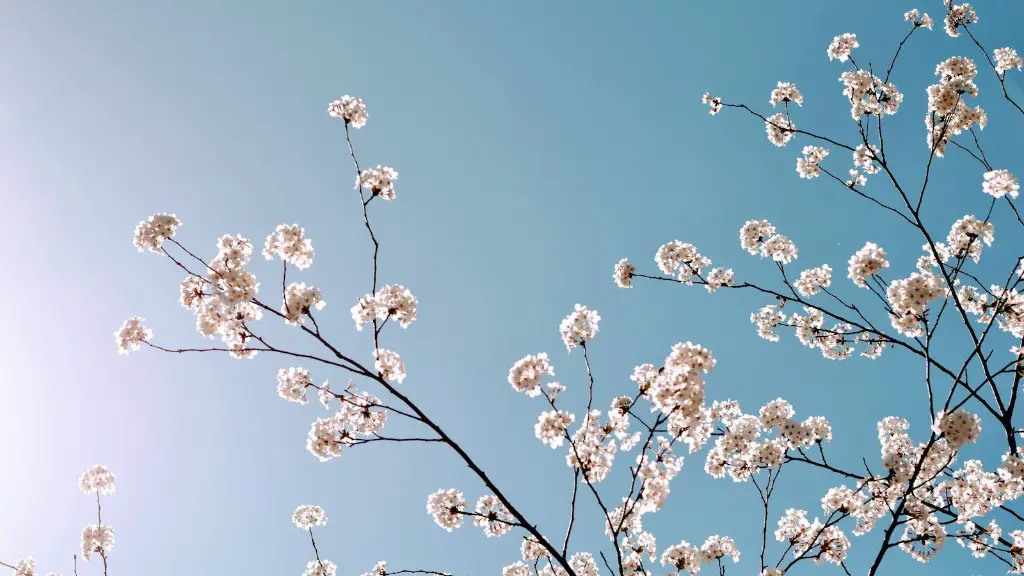When is the Best Time to Prune a Weeping Cherry Tree?
Pruning a weeping cherry tree is essential for its health and general wellbeing. Knowing when to prune a tree of this type is imperative if it is to remain healthy, stay properly maintained, and develop in a way that is beneficial for the tree and its owner.
Weeping cherry-trees are relatively delicate trees, and as such they should be treated with the utmost care. The optimal time to trim one of these trees begins in late winter and early spring, while they are still dormant. If pruned at this time, the tree will have time to heal in time for the next stage of growth.
More specifically, it is recommended that the pruning of this species of tree be done when their leaves are off at least five months before the first signs of buds are visible. By pruning your weeping cherry at the right time, it will ensure that the tree can produce a healthy crop of blossoms in spring. Pruning too early may increase the risk of infection and damage from late-season frosts.
It is important to keep in mind that incorrect pruning can cause serious damage to the tree, so it is best to consult an expert or any arborist before starting your work. When done correctly, the process starts with a clear vision of what you would like the tree to look like in the end. It is important to identify the primary branches and make sure the remaining branches are in balance with the main one. Considering that a weeping cherry-tree is quite fragile, the pruning should be more conservative than you would do on any other type of tree.
When it comes to helping the tree re-stabilize after the pruning, it is recommended to use a combination of mulch and soil conditioner around the root zone. This combination helps preserve moisture and reduce the effects of climate changes.
What Tools do I Need?
The tools used for pruning a weeping cherry tree should be sharp and of good quality in order to keep the cut clean and healthy. The most important tools are a pair of long-handled, sharp bypass pruners, a pruning saw with a curved shape, and a lopper. The bypass pruners are ideal for cutting small to medium-sized branches, while the lopper is necessary when cutting thicker branches.
Tips on Pruning
When pruning a weeping cherry tree, it is important to remember that less is more. The tree should be pruned and thinned out to avoid overgrown, dense branches and promote new growth. Paying close attention when removing branches is essential in order to ensure that only healthy parts are left with the desired shape, providing an attractive look to the tree.
It is important to focus on managing the tree and allowing it to develop its natural shape. You should begin by removing any dead, damaged or diseased branches followed by any secondary branches that are crossing and rubbing against each other. After that, you can thin out and select any branches that are growing outwards from the trunk, providing the tree with a balanced look.
It is also beneficial to prune away any young, vertical branches that can become too heavy if left on the tree. The best tool for this kind of pruning is the pruning saw. Finally, make sure the remaining branches are broadly spaced around the tree to invite in plenty of sunlight, which helps the younger branches grow and develop.
Controlling Growth
Weeping cherry trees need to be pruned at least once every 3 to 4 years in order to ensure they are healthy and properly maintained, with a balanced and aesthetically pleasing shape. This will encourage the tree to grow in its natural form and help it stay healthy. In addition, consistency is key when it comes to pruning, as it will help control the growth of the tree and keep it from becoming unmanageable.
When Not to Prune
Although the best time to prune a weeping cherry tree is in late winter, there are still certain times to avoid pruning, like during the hottest months of the summer. This is because the risk of infection and damage increases during this time, as the tree is more vulnerable in the heat. It is also not recommended to prune a tree when temperatures are near freezing.
Pre-pruning and Maintenance
It is always best to have a plan before you start pruning any tree. Before you start, it is important to examine the tree’s structure and assess the general shape, look for dead or damaged branches, and assure that the tree is healthy and in good condition. This will help you plan a strategy for how and what to prune.
The pruning should be done carefully and with the utmost attention. It’s best to keep a few supplies handy in case of any unexpected cuts or accidents. These supplies should include first-aid equipment, gloves, protective glasses, and an arborist’s pruning saw.
Additionally, you should take safety precautions by wearing clothing that is appropriate for the job, such as long pants and a long-sleeved shirt. Taking regular breaks while working is also advisable to ensure your safety and the safety of the tree.
The Effects Of Pruning
Weeping cherry trees often gain their beautiful shape and form due to their naturally drooping branches. Pruning can have a negative impact on their growth and shape, so it is important to make sure that only necessary pruning is done.
Correct pruning of a weeping cherry tree can help it bloom with more vibrant and plentiful blooms. Additionally, it will allow more light to reach its inner branches and help stop the branches from getting too dense. Ultimately, the results of pruning are highly dependent on how it is done.
What Can Happen If Pruning is Done Incorrectly?
Incorrect pruning can not only damage the tree, but can also cause disease and pest problems. Over-pruning or pruning in the wrong times can cause disruption of the natural growth processes and weaken the tree’s health. This can lead to diseases and other problems such as deficient nutrition or pest problems, which can cause damage to the tree and make it lose its vigor and beauty.
Pruning incorrectly can also reduce the amount of blossoms and the quality of the blossoms in the upcoming season. It is important to ensure that you are well informed before pruning your weeping cherry tree and understand the effects that pruning can have.
Fertilization and Pest Control
In order to ensure that pruning is beneficial to the tree, its health and its appearance, it should also be combined with fertilization. Fertilizing a weeping cherry tree should be done when the tree is dormant, in late winter or early spring. This will give the tree the necessary nutrients to develop strong and healthy branches, leaves, and blossoms.
It is also important to check for any pests or diseases when the tree is in full bloom. These can be identified by their particular colors and shapes of leaves, and specific symptoms on the branches and leaves of the tree. Some can be treated using natural remedies, while others require a more serious approach, such as using chemical pesticides to eradicate them.
Conclusion
Pruning a weeping cherry tree will help retain its beauty as well as promoting a healthy and vigorous tree. Knowing when and how best to prune is of utmost importance. Pruning in the right time and taking the right approach can result in a full blooming tree in the upcoming season. All of these pruning methods should be combined with fertilization and pest control measures in order to ensure that the tree remains healthy and strong.


